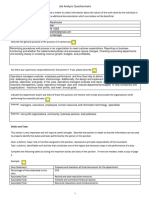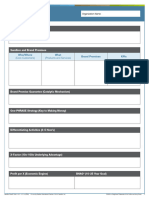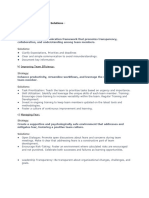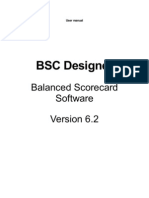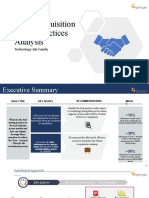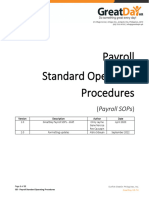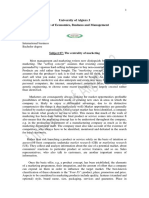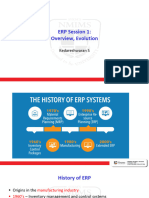What is Business Process Management?
Business process management (BPM) run on the principle that processes are central
an organization. BPM improves operations through better process design, modeling,
analysis, and execution
BPM brings attention to the highest-value processes - the ones
that are most aligned with the business goals and strategy
for the best return on investment.
Why BPM Technology is Essential?
Business Process Management is a methodology that almost always involves using
technology to model and execute processes. Any specialized technology that
accompanies a BPM initiative is called a Business Process Management System (BPMS).
Every BPM System Better BPM systems
includes: will also have:
A Simplified Form Builder Drag-and-drop Interface
Powerfully-built Workflow Engine Cross-platform Integration
Notification Capabilities Reporting And Analytics
Why BPM matters?
When left unmanaged, business processes can unravel, twist, and introduce a lot of
chaos. As tasks go from person to person, it can be hard to keep a high-level
perspective on what is actually going on.
Waste of time Demoralized team More errors
Increase blame Lack of data
5 Steps involved in BPM
Design
Identify all the key information and map out the entire
workflow steps.
Model
Create an automated form and workflow, integrate, and add
conditions if needed.
Implement
Train users, test process, and make it live. Tweak
notifications or reminders.
Monitor
App admins measure KPIs, SLAs, and other performance
metrics.
Optimize
Review a BPM process periodically and identify areas for
improvement.
What can BPM do?
Done right, business process management (BPM) brings efficiency, effectiveness, and
agility to your processes. Click on any of these links to learn about the benefits of
following the BPM process.
HR Marketing Sales Finance
Approve employee Coordinate marketing Shorten your sales One-click approvals
timesheets faster campaigns effectively cycle workflows for reimbursements
Onboard new hires Churn out consistent Be on time with quotes Customize workflows
without hassles content marketing and invoices for unique scenarios
Types of BPM systems
Integration Centric Human-Centric Document - Centric
It is business process management It routes tasks and encourages team It organizes the flow of documents by
combined with service-oriented architecture collaboration. It’s useful when different streamlining processes and eliminating
and it helps minimize management overhead. people are involved in one approval cycle. obstacles stopping the seamless flow.
3 most common BPM methodologies
Lean Six Sigma Lean Six Sigma
A brainchild of Toyota’s production Pioneered by Motorola in 1985; helps A hybrid between Lean & Six Sigma.
system: fast to implement; eliminates to cut down process defects and methodologies; focuses on process
waste: reduces cost & process time; inconsistencies; implemented either variations: increases profits, efficiency,
favorite among industrial companies. through DMAIC or DMADV approach and boosts employee morale.
BPM Technology must - haves
Visual Drag & Drop Administrative Cross-platform
Workflow Tool Form Designer Features Integration
Single Sign-On Mobile Role-Based Reports and
Capability Compatibility Access Control Analytics
Performance Performance &
Metrics Scalability
The Who’s Who of BPM
Sandy Peter Clay Nathaniel
Kemsley Schooff Richardson Palmer
John Steve John Scott
Myers Towers Morris Francis
Test Drive the
#1 BPM Software for Free
Try it now
















